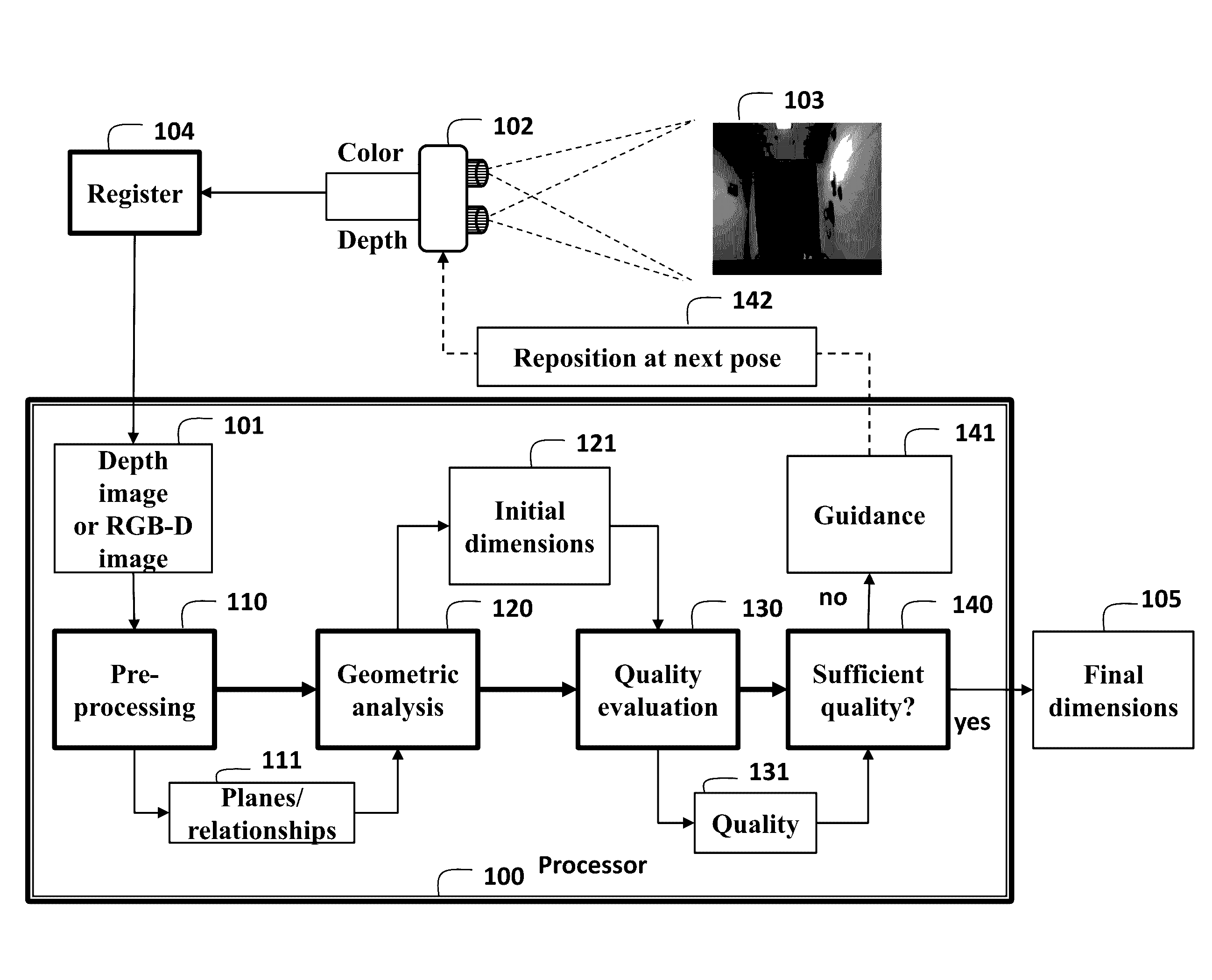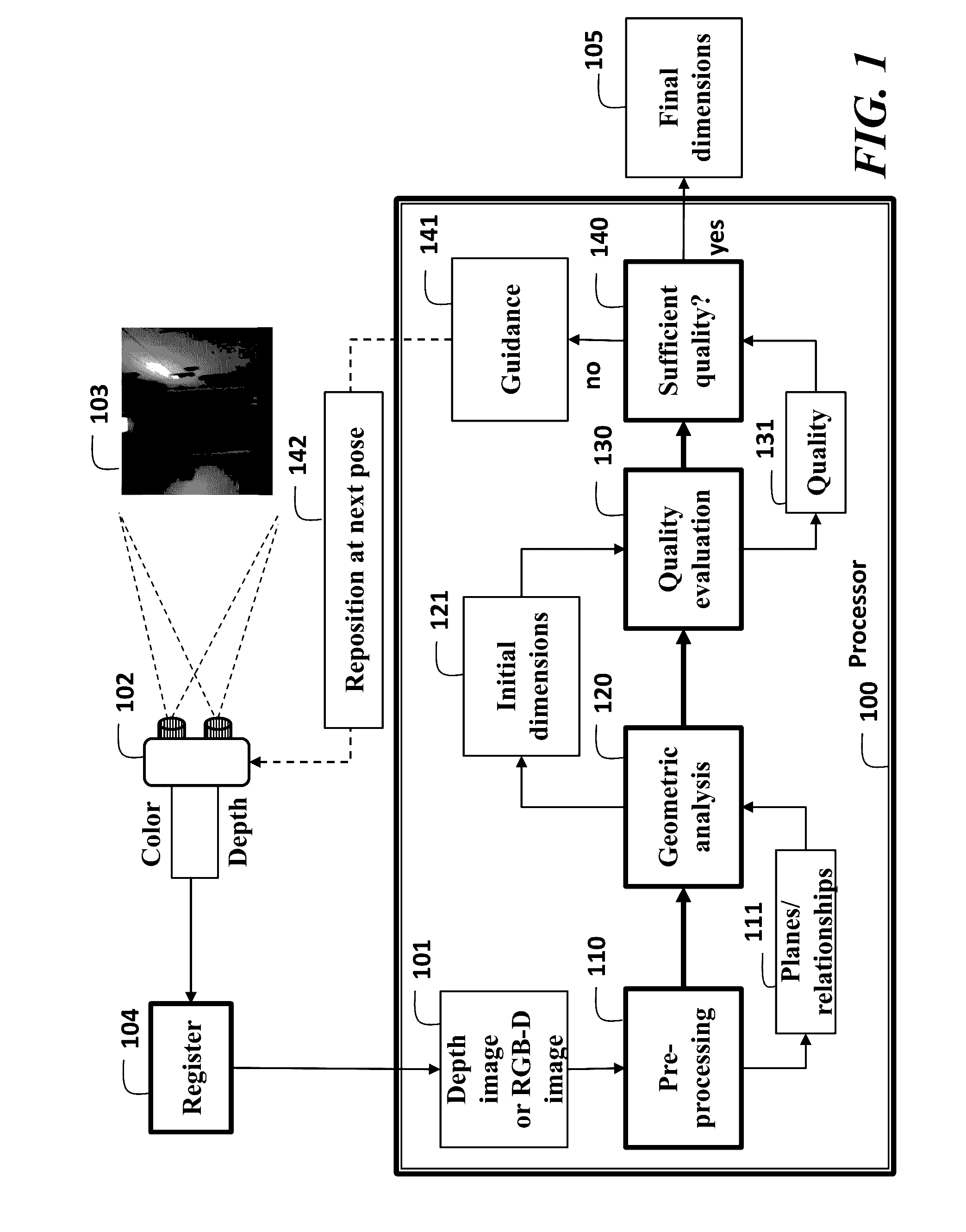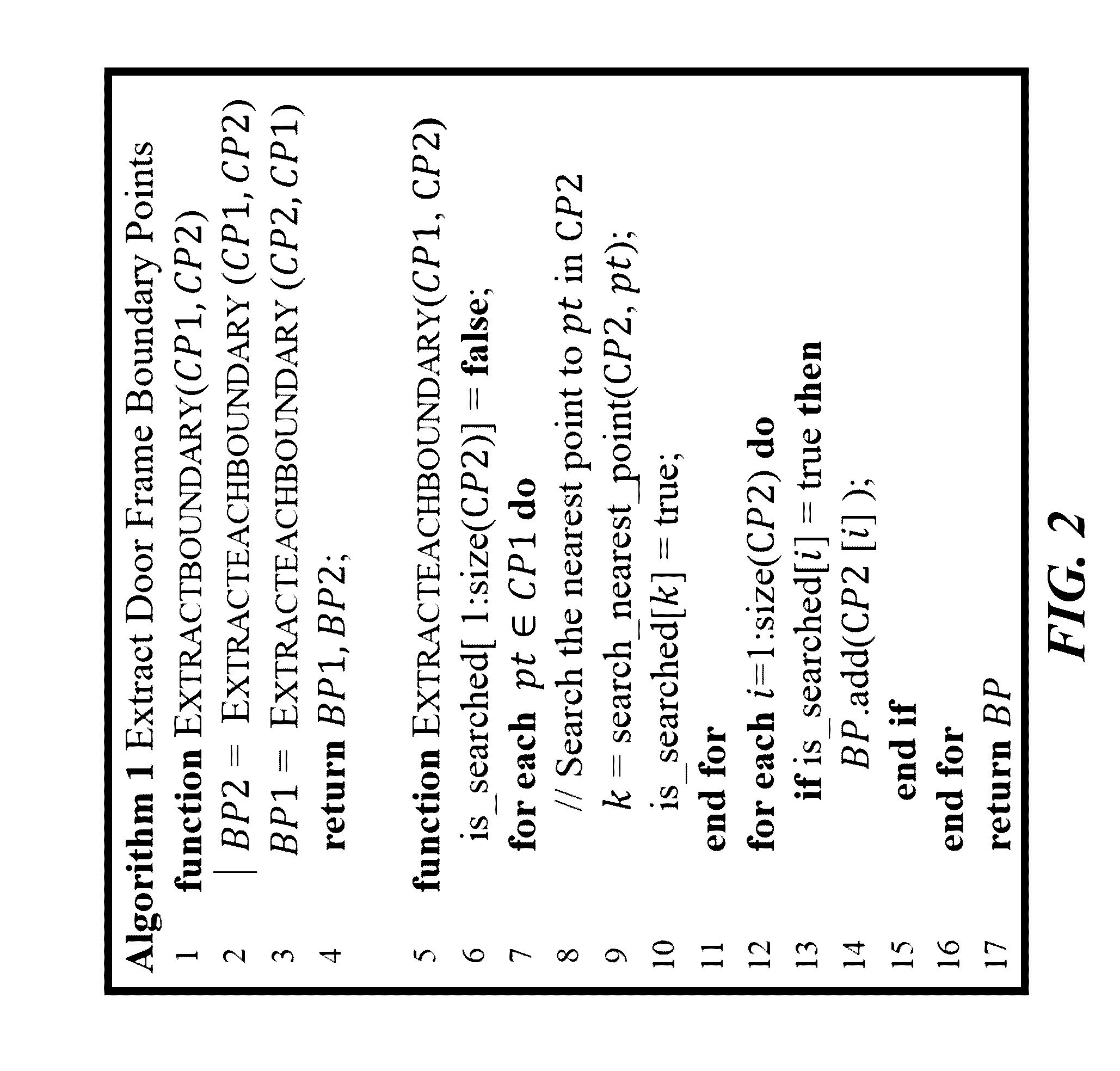Method for Determining Dimensions in an Indoor Scene from a Single Depth Image
a depth image and indoor scene technology, applied in the field of computer vision, can solve the problems of low accuracy of dimensional measurement, high cost of sensor, long scanning time, etc., and achieve the effects of high quality data, high quality dimensional measurement, and improved application results
- Summary
- Abstract
- Description
- Claims
- Application Information
AI Technical Summary
Benefits of technology
Problems solved by technology
Method used
Image
Examples
Embodiment Construction
[0020]As shown in FIG. 1, the embodiments of our invention provide a method for determining dimensions in an indoor scene 103 as represented in a single depth image 101. The depth image can be acquired by a depth sensor 102. The focus of the invention is on the dimensional analysis of indoor infrastructure with planar surfaces. The scene can have an associate type, e.g., room or hallway. The type can define predetermined shapes, such as boxes or openings.
[0021]In some embodiments, a Kinect™ for Xbox sensor is used as the depth sensor to obtain 3D point clouds of indoor scenes. Equipped with an infrared (IR) camera and a color (RGB) camera, Kinect is able to acquire a depth image and a color image of the scene. Therefore, in some, but not all embodiments, the depth image can be registered 104 with the color image by using sensor calibration to obtain an RGB-D image 101.
[0022]Pre-processing 110 is applied to the depth image or the RGB-D image 101. The pre-processing includes extractin...
PUM
 Login to View More
Login to View More Abstract
Description
Claims
Application Information
 Login to View More
Login to View More - R&D
- Intellectual Property
- Life Sciences
- Materials
- Tech Scout
- Unparalleled Data Quality
- Higher Quality Content
- 60% Fewer Hallucinations
Browse by: Latest US Patents, China's latest patents, Technical Efficacy Thesaurus, Application Domain, Technology Topic, Popular Technical Reports.
© 2025 PatSnap. All rights reserved.Legal|Privacy policy|Modern Slavery Act Transparency Statement|Sitemap|About US| Contact US: help@patsnap.com



